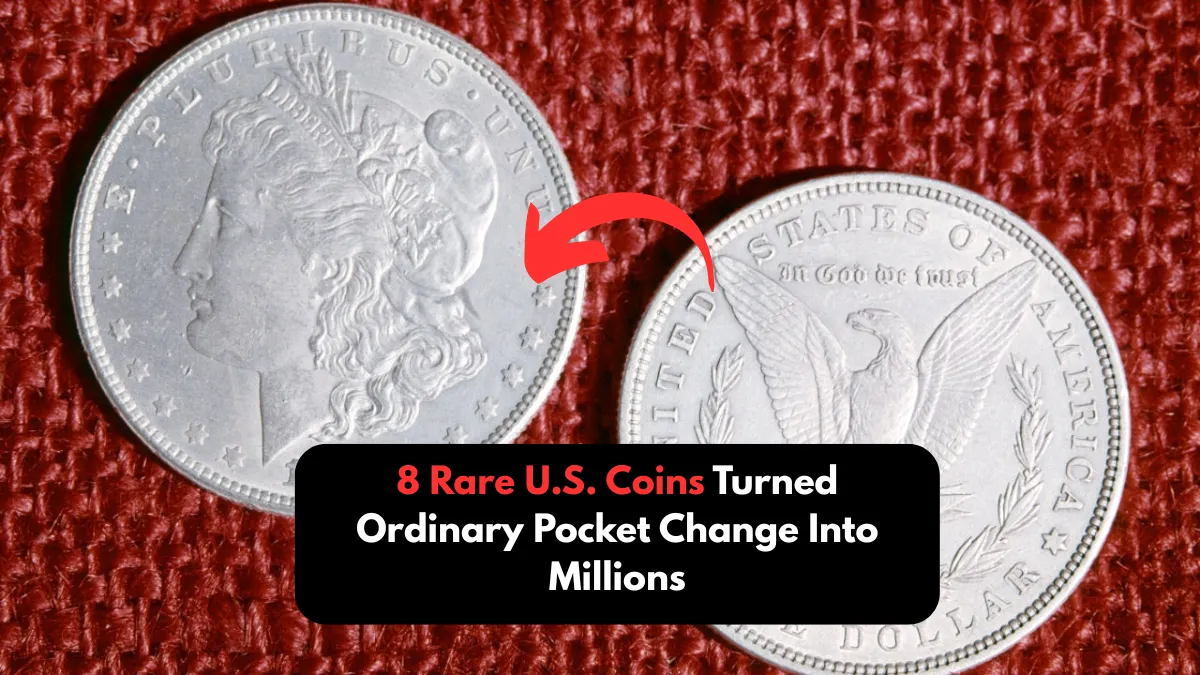What if the Change in Your Pocket Could Be Worth a Small Fortune?
Most coins in circulation are spent and forgotten, but a select few hold tremendous value because of their rarity, minting mistakes, or historical significance. These special coins have fascinated collectors and investors, turning everyday finds into remarkable treasures. From elusive nickels to flawed dimes, each coin carries a unique story, preserving a piece of history and intrigue.
In this article, we’ll dive into the captivating stories behind eight rare U.S. coins that turned ordinary pocket change into impressive fortunes. Additionally, we’ll offer expert advice on how to spot valuable coins in your collection and provide guidance to help you make smart choices in the thrilling world of coin collecting.
What Makes a Coin Truly Valuable?
Several elements determine a coin’s value, and knowing these can help you recognize coins with high worth.
Rarity
Coins produced in limited quantities or with very few surviving examples tend to be more valuable. The 1913 Liberty Head Nickel, with only five known specimens, is a perfect illustration of this.
Historical Importance
Coins linked to key events or periods, such as the 1933 Double Eagle connected to the Gold Recall Act, are often treasured not just for their material but also for their historical relevance.
Condition & Grading
A coin’s physical condition, measured on a scale from 1 to 70, has a direct impact on its value. Coins in better condition, especially those classified as Mint State, command higher prices compared to those showing wear or damage.
8 Rare U.S. Coins That Made Headlines
1. 1913 Liberty Head Nickel
Price Realized: $4.56 million
Why It’s Important: Only five examples are known, making it extraordinarily rare with an aura of mystery surrounding its creation.
Tip: Always seek certification when dealing with coins of such high value.
2. 1894-S Barber Dime
Estimated Worth: More than $1 million
Background: Only 24 were struck, likely as presentation pieces.
Interesting Note: Some coins were given as gifts by mint employees.
3. 1933 Double Eagle
Sold For: $18.9 million
Details: Though minted, these coins were never officially released and most were melted down after the Gold Recall Act.
Note: Only a handful are legally owned, heightening their desirability.
4. 1975 No-S Roosevelt Dime
Price: $500,000
Reason for Scarcity: A minting error omitted the “S” mint mark, making it extremely rare.
Advice: Inspect dimes closely—mint errors can hold substantial value.
5. 1916-D Mercury Dime
Value Estimate: $200,000+
Why Collectors Seek It: It’s the first year this dime was issued and high-grade examples are hard to find.
Tip: Look for sharp details and “full bands” on the coin’s reverse side.
6. 1873-CC No Arrows Seated Liberty Dime
Value Potential: Several hundred thousand dollars
Why It’s Unique: Minted at Carson City, this dime lacks arrow marks, setting it apart.
Collector’s Tip: Coins from Carson City are prized for their connection to Wild West history.
7. 1796 Draped Bust Dime
Top Value: As much as $1 million
Significance: One of the earliest dimes struck by the U.S. Mint.
Tip: Coins from the 18th century often carry high value if well maintained.
8. 1919-D Mercury Dime (Full Bands)
Sale Price: $218,500 (graded MS 66)
Key Feature: “Full bands” indicate a strong, detailed strike.
Advice: Higher-grade specimens are significantly more valuable.
How to Spot Rare Coins in Your Collection
Examine Mint Marks
Look for uncommon mint marks such as “CC” (Carson City) or missing marks like the absent “S” on the 1975 dime. These details can greatly influence a coin’s rarity.
Search for Minting Errors
Mistakes like double strikes, missing elements, or misprints can add rarity to a coin. Using a magnifying glass can help uncover subtle flaws.
Verify Key Dates
Certain years, like 1916 or 1933, are known for producing rare coins. Conducting a quick online search will help you identify if a particular year has collectible significance.
Check the Coin’s Condition
Coins preserved in excellent condition typically have greater value. Use protective holders to maintain the quality and enhance the coin’s future worth.
How to Get Your Coins Evaluated
Use Reputable Grading Services
Professional services such as NGC or PCGS offer authentication and grading that ensure your coin’s value is acknowledged by collectors and investors.
Visit Professional Coin Dealers
Certified dealers, especially those recognized by the American Numismatic Association (ANA), can provide a reliable assessment of your coin’s value.
Do Online Research
Leverage online resources like auction websites, coin valuation databases, and market tracking tools to gather information and monitor your coin’s current worth.
FAQs
Q1: How can I tell if my coin is rare?
Check for unique dates, unusual mint marks, minting errors, or coins in excellent condition—they’re the key signs of potential rarity.
Q2: Are older coins always more valuable?
Not necessarily—age doesn’t guarantee worth. Rarity, condition, and demand are more important than age alone in determining value.
Q3: Where is the mint mark found on U.S. coins?
Mint marks are usually located near the date, either on the front (obverse) or back (reverse), and indicate where the coin was produced.
Q4: Can damaged coins still be worth money?
Yes, but condition matters greatly. Even rare coins lose value if heavily worn or scratched, so preservation is crucial for collectors.
John M. Moody is a passionate writer known for his insightful and engaging storytelling. With a background in astrology and a love for exploring the human experience, John weaves cosmic wisdom into compelling narratives that inspire and enlighten. His work spans articles, essays, and spiritual guides, often blending mystical themes with real-life reflections. When he's not writing, John enjoys stargazing, reading mythology, and connecting with nature for creative inspiration.
